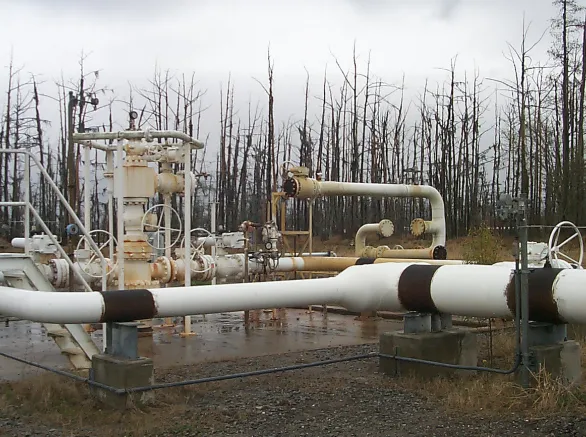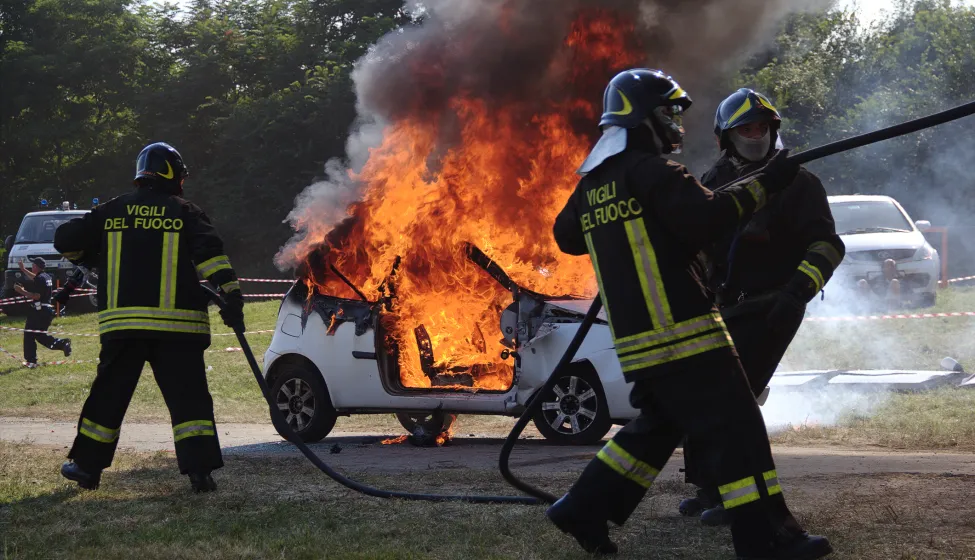June 12, 2025
New research indicates that fire blankets used during EV fire suppression efforts can smother flames but trap combustible gases
During an electric vehicle fire incident, first responders may attempt to smother the flames using fire blankets. Research conducted by the UL Fire Safety Research Institute (FSRI) in collaboration with the National Fire Protection Association (NFPA) warns that fire blankets can trap combustible gases that are emitted during the decomposition of an EV battery, which could ultimately result in an explosion hazard.
The Fire Protection Research Foundation (FPRF), the research arm of the NFPA, and the FSRI conducted a series of experiments with fire blankets used during EV fire suppression efforts. Their findings included the following:
- Fire blankets could effectively smother EV battery flames by decreasing the amount of oxygen being introduced into the fire.
- Despite the flames being eliminated, battery thermal runaway continued, releasing combustible gases and heat.
- Flammable gases accumulated under EV fire blankets, posing a risk of explosion to firefighters and other personnel in proximity to an incident EV.
- The explosion risk increased when the fire blanket was removed as a result of oxygen-rich air being re-introduced into the smoldering vehicle.
These results are part of a larger joint research project to determine firefighter best practices when suppressing EV battery fires, Assessment of EV Firefighting Tactics, Tools, and the Impact on Stranded Energy. The FPRF and the FSRI tested four firefighting tactics to suppress and control EV battery fires, including standard water streams, water mixed with a fire suppression agent, fire blankets, and firefighting appliances. Researchers are currently analyzing data from these tests and plan to publish the full report on June 16 at the NFPA Conference & Expo in Las Vegas. The full analysis will also be publicly available this fall on the NFPA Foundation website.
When an EV battery experiences thermal runaway, extreme heat and fire damages cells and evaporates battery electrolytes, releasing toxic and combustible gases. These gases include ignitable gases such as hydrogen and gaseous hydrocarbons, as well as toxic gaseous compounds such as hydrogen fluoride, hydrogen cyanide, nitrogen dioxide, hydrogen chloride, sulfur dioxide, and carbon monoxide. Controlling the generation and subsequent release of these hazardous gases and using proper protective equipment during an EV fire are crucial to public health. Studies and reports like these being conducted by the FSRI and FPRF will help guide future firefighting and cleanup protocols.
This new EV research by the FPRF and the FSRI provides fire response personnel potentially life-saving information related to the use of fire blankets during fire suppression efforts. This research is also valuable for EV fleet operators, large facility EHS (environmental, health, and safety) managers (e.g., office buildings, airports, etc.), maritime fleet managers, and vehicle design engineers that are continuously evaluating more effective and safer techniques that can be deployed to protect life and property during an EV fire.
What Can We Help You Solve?
Exponent's fire protection experts have extensive experience helping organizations and manufacturers evaluate and formulate fire protection and suppression strategies for battery fires. Our battery experts have also conducted numerous EV battery fire experiments to determine how thermal runaway events occur and methods for suppressing, and ultimately extinguishing, battery fires.
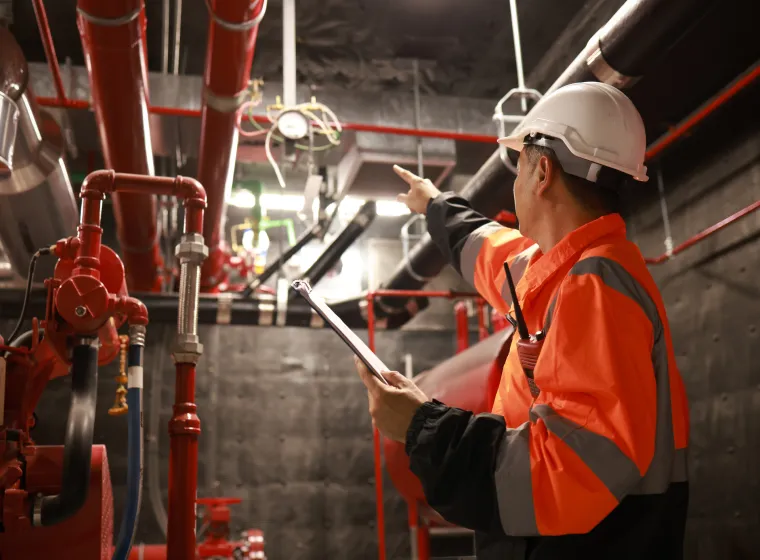
Fire Protection Engineering
Extensive fire suppression, detection, and alarm system testing to support achieving code and regulatory requirements.
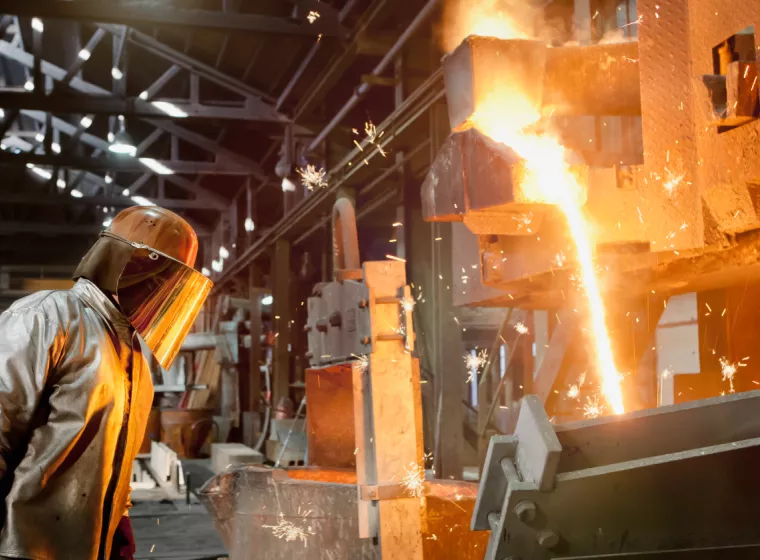
Fire & Flammability Testing
Thorough fire and flammability testing for sprinklers, smoke, and heat detectors, vehicle fire testing, and more.
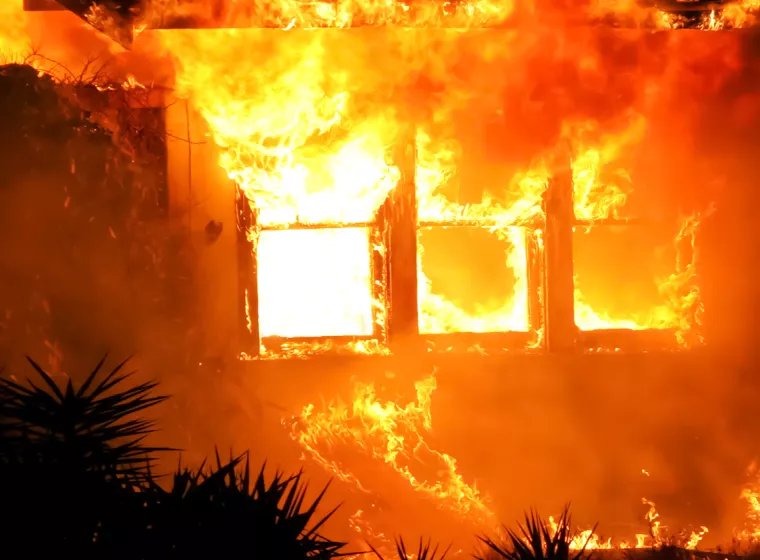
Fire & Explosion Investigations
In-depth field examinations and high-tech modeling and testing to determine the origin and cause of fires, gas explosions, dust explosions, and other explosions...
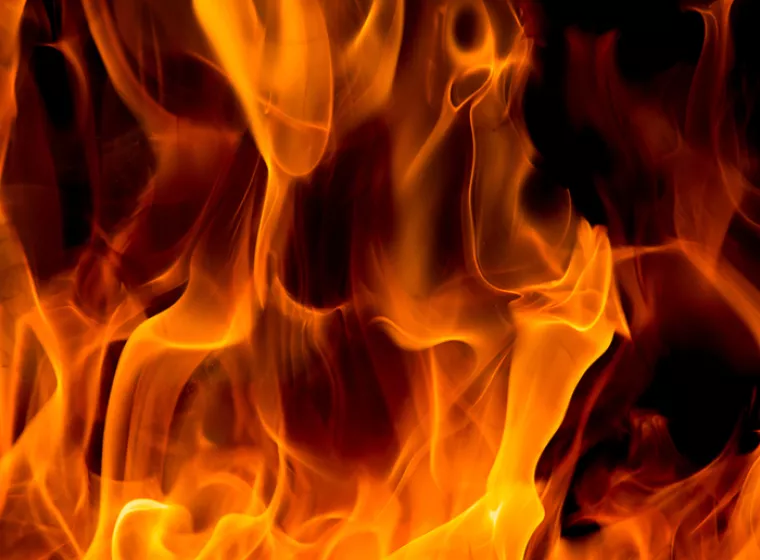
Thermal Sciences
Uncover root causes of fires, explosions, thermal, and flow-related accidents across industries.
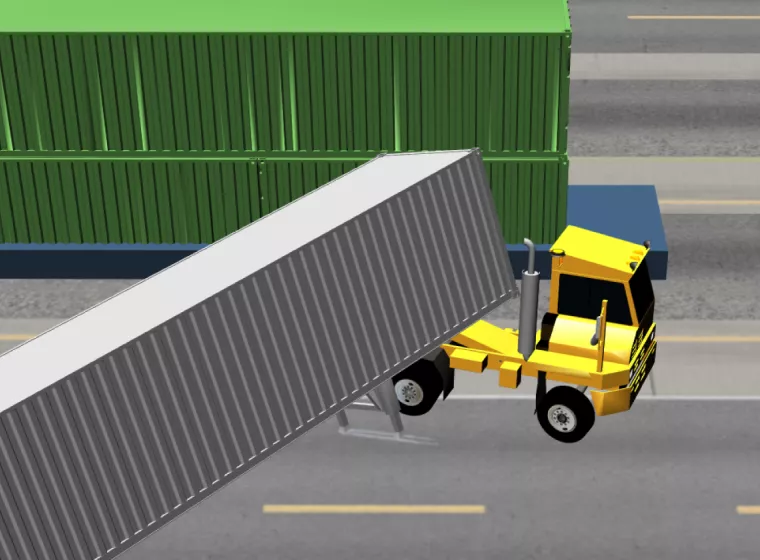
Accident Reconstruction & Analysis
Crash analysis and transportation accident investigation and reconstruction services.

Batteries & Energy Storage
Supercharge performance, reliability, and safety across all stages of the battery and energy storage product lifecycle.
Insights
